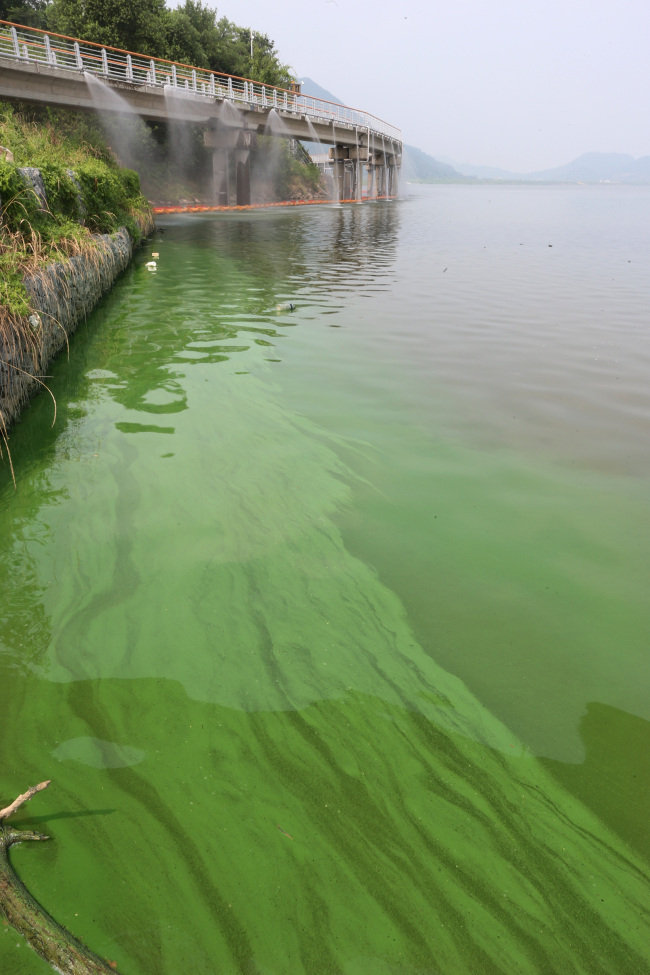
Algal blooms show up on the surface of the Nakdonggang River near a major water purification center in Changwon, South Gyeongsang Province, last Wednesday. (Yonhap News)
In what has become an annual summer scourge in South Korea, millions of dead fish have been washed ashore and rivers have been fouled with bright green beds of algae for the past two weeks.
Residents of South Gyeongsang Province are voicing concerns over a record level of green tides in Nakdonggang River, the source of drinking water to some 3 million people in Daegu and in adjacent areas.
According to the Ministry of Environment, the population of microorganisms sharply increased to dangerous levels due to scorching heat and prolonged draught.
Environmentalists claim that the weirs and mini-dams built as part of the controversial river redevelopment project by the previous government have slowed water flows, creating conditions for the rapid proliferation of the green muck.
The phenomenon is usually caused by nutrient enrichment, high temperature and low water flows among other factors.
The number of algal cells per milliliter reached 15,048 and the chlorophyll-a concentration rate marked 56.1 milligram per cubic meter, respectively more than double and triple the recommended levels of 5,000 cells and 25 milligrams.
But government officials are downplaying the possibility that the phenomenon would affect drinking water and human health.
“We’ve confirmed that the purification plants that get water supply from the Nakdonggang River have a very low level of algae concentration and cyanobacteria,” the Waterworks Headquarters Daegu Metropolitan City wrote on its website last Friday.
While the green tide has fast developed towards the east coast, officials say it may plague a wider area sooner than expected.
The nation’s eastern and southern seas are hit by red algal blooms which have appeared earlier than in the past and are expected to cause record damage to some areas.
Tongyeong, South Gyeongsang Province, is hit with a record level of red tides that have already killed some 17 million fish, and generated an estimated 13.8 billion won ($12.2 million) of damage in less than a month.
This marks the biggest red tide damage since 1995 when red tides poisoned the water for nearly 49 days and generated a loss of 30.8 billion won.
But further damage is expected as dead fish are fast decaying under high temperature, which usually hovers above 33 degrees Celsius in Tongyeong.
To relieve the phenomenon, 14 vessels have been dispatched since last Tuesday to the scene to spray red clay, but experts say this will instead worsen the situation.
“The idea of pushing down the red tide with red clay seems to be a solution for now, but it will poison fish in the long run,” said Na Jae-woon, a polymer engineering professor at Sunchon National University.
The Ministry of Oceans and Fisheries and the Ministry of Security and Public Administration announced they will spend 2.5 billion won in emergency aid to support the damage.
By Suk Gee-hyun (
monicasuk@heraldcorp.com)






